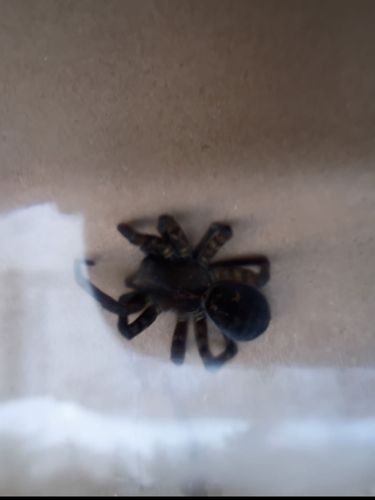Wolf Spider
Scientific Name: Lycosidae (Family)
Order & Family: Araneae (Order), Lycosidae (Family)
Size: Typically 10-35 mm (0.4-1.4 inches) in body length, with females generally larger than males.

Natural Habitat
Wolf spiders are ground-dwelling spiders found in a variety of habitats including grasslands, forests, deserts, and suburban gardens. They often hide under rocks, logs, leaf litter, or in burrows.
Diet & Feeding
Wolf spiders are opportunistic predators. They primarily hunt insects and other small invertebrates, such as crickets, grasshoppers, beetles, and other spiders. They do not build webs for catching prey but actively chase and pounce on their victims.
Behavior Patterns
Wolf spiders are solitary, nocturnal hunters. They are known for their fast movements and excellent eyesight, which they use to locate prey. Females often carry their egg sacs attached to their spinnerets and, after hatching, carry the spiderlings on their backs for several days to weeks.
Risks & Benefits
Potential Risks: While wolf spiders are venomous, their bites are generally not considered dangerous to humans. A bite can cause localized pain, redness, and swelling, similar to a bee sting. Allergic reactions are rare. Potential Benefits: Wolf spiders are beneficial as they help control populations of various insect pests in agricultural and garden settings, contributing to natural pest control.
Identified on: 9/5/2025